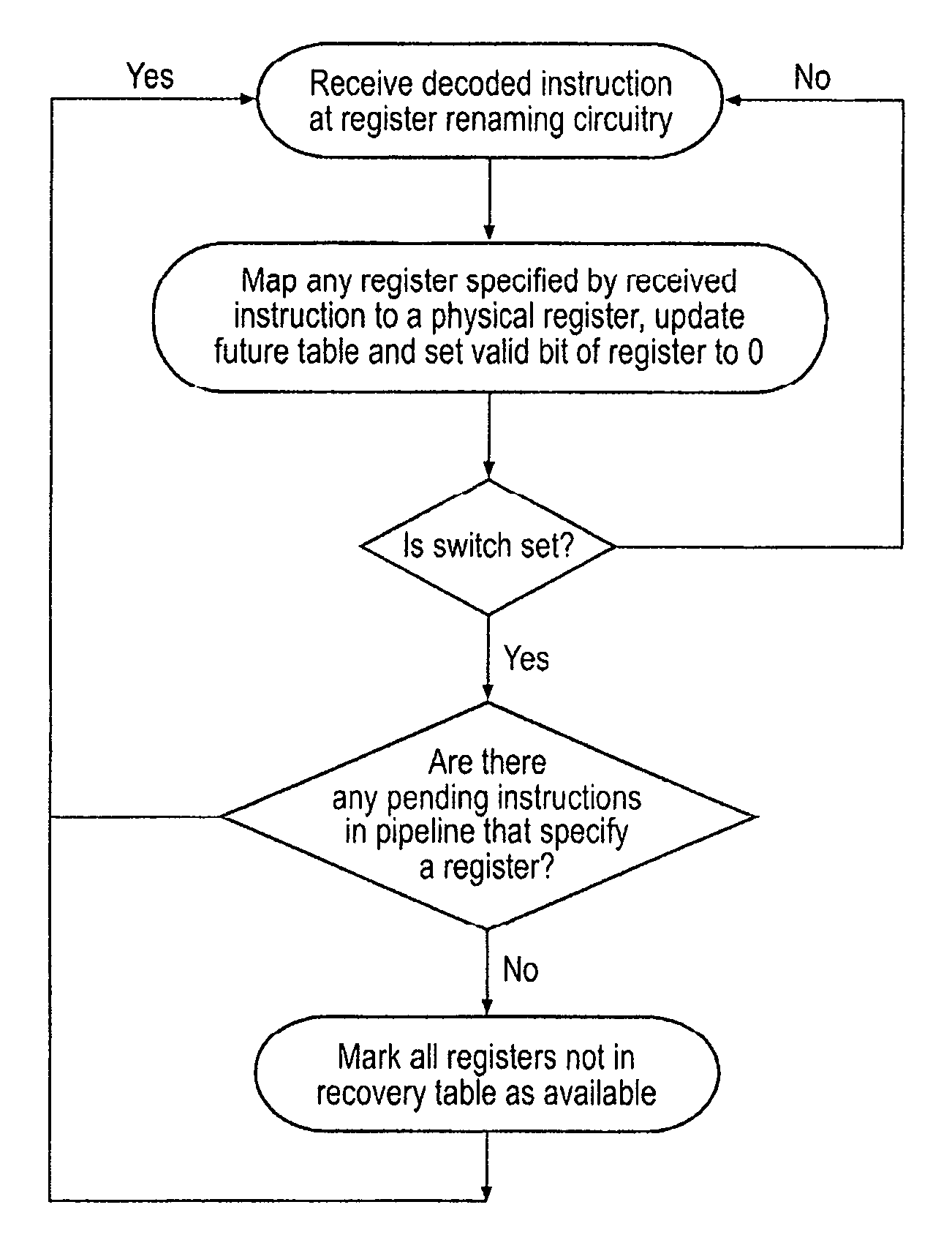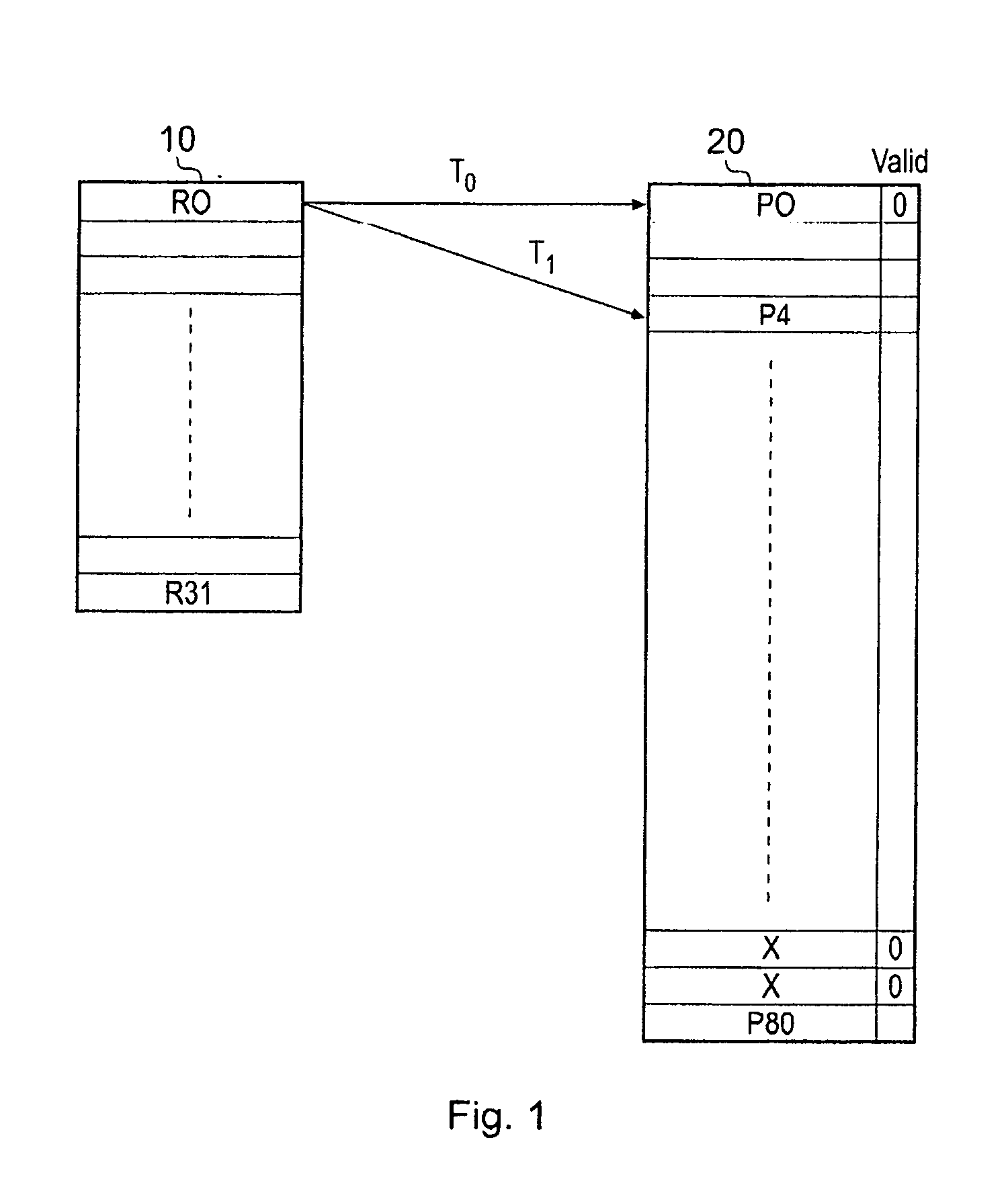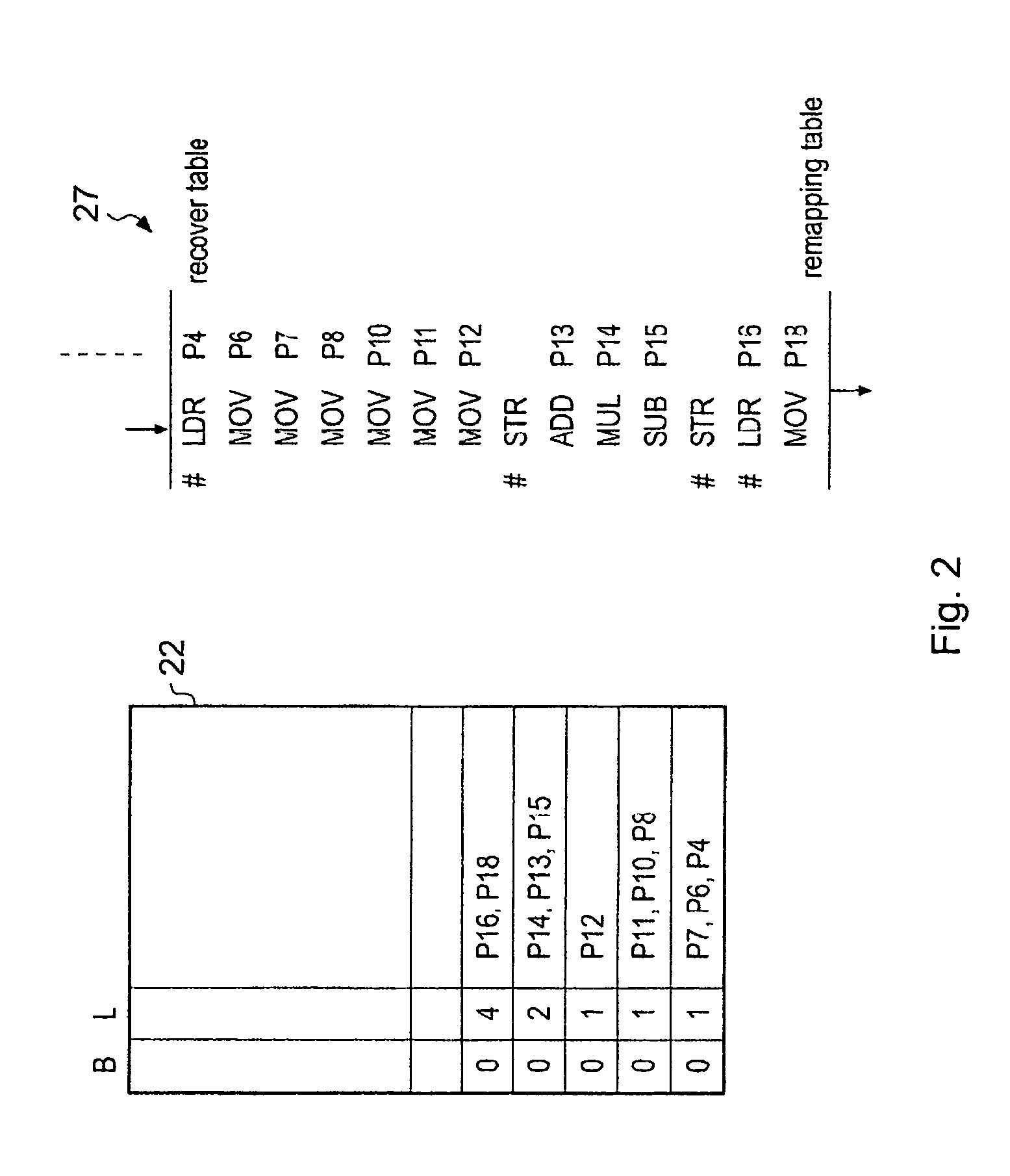Marking registers as available for register renaming
a register and register technology, applied in the field of data processing, can solve problems such as exasperation, difficulty in avoiding write after read (war) hazards, and inability to execute renaming circuits
- Summary
- Abstract
- Description
- Claims
- Application Information
AI Technical Summary
Benefits of technology
Problems solved by technology
Method used
Image
Examples
Embodiment Construction
[0045]FIG. 1 schematically shows a set of architectural registers R0 to R31 being mapped to a set of physical registers P0 to P80. In register renaming a single architectural register can be mapped onto multiple physical registers, each physical register being a different view in time of this architectural register. This is shown by register R0 being mapped to register P0 at time T0 and mapped to register P4 at time T1. These different mappings are stored in structures commonly called future files, the future files representing the different mapping architectural / physical registers with time. Each time a speculative block of instructions is known to be effectively committed the associated further file becomes the “recovery” file offering the latest known stable state of the system (This is illustrated in FIG. 2).
[0046]This ability to map an architecture register to more than one of the physical registers is one way of allowing out of order processing of the instructions to be suppor...
PUM
 Login to View More
Login to View More Abstract
Description
Claims
Application Information
 Login to View More
Login to View More - R&D
- Intellectual Property
- Life Sciences
- Materials
- Tech Scout
- Unparalleled Data Quality
- Higher Quality Content
- 60% Fewer Hallucinations
Browse by: Latest US Patents, China's latest patents, Technical Efficacy Thesaurus, Application Domain, Technology Topic, Popular Technical Reports.
© 2025 PatSnap. All rights reserved.Legal|Privacy policy|Modern Slavery Act Transparency Statement|Sitemap|About US| Contact US: help@patsnap.com



